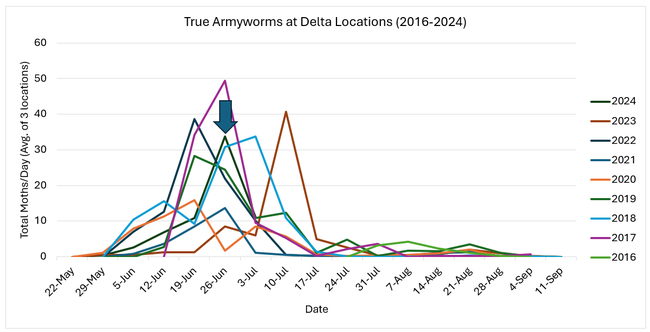- Author: Michelle M Leinfelder-Miles
UC Cooperative Extension will host the Delta Corn Field Meeting on Friday, October 11th from 10:00-11:30am, on Tyler Island in Sacramento County. The agenda is pasted below, and the attached version provides a map to the field. In addition to information on the field corn variety trial, this year's agenda includes a presentation on nitrogen mineralization and management in corn. We have applied for CCA (0.5 of CM; 0.5 of NM) and CDFA INMP continuing education credits, but applications are still pending. Light refreshments will be provided. Thanks for your interest in UC Cooperative Extension programming, and we hope to see you in the field!
Agenda:
10:00am Field corn variety evaluation – preliminary results, Michelle Leinfelder-Miles, UCCE, SJC/Delta
10:20am Variety traits for the Delta, Seed company representatives
10:30am Residual nitrate and nitrogen management in corn fields in the Delta, Daniel Geisseler, UC Davis
11:00am Viewing of field plots
2024-10-11 Delta Corn Meeting Agenda
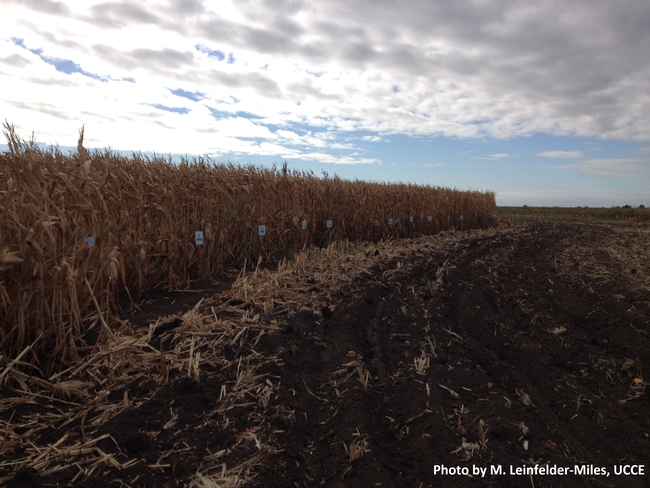
- Author: Michelle M Leinfelder-Miles
The Kearney Field Crops, Alfalfa and Forage Field Day will be on Friday, September 13, 2024. The field day will take place at the Kearney Research and Extension Center, 9240 S. Riverbend Ave., Parlier, CA 93648. Sign-in and morning refreshments begin at 7:00am, and the field tour tram leaves promptly at 8:00am. There is no registration fee, but please pre-register for the event to help us with our planning. Only pre-registered attendees are guaranteed a lunch. CCA (1.0 SW, 1.5 PM, 1.0 CM), CDFA INMP (1.0), and DPR (2.0 of Other) continuing education credits have been approved. The agenda is below and attached to the bottom of this post. We look forward to seeing you at the field day!
Agenda:
7:00 am Sign-in (refreshments provided)
8:00 am Depart for Field Tour
- Sorghum Variety Trials (Grain & Forage) – Jackie Atim, UC ANR
- Sorghum Variety Trial under Deficit Irrigation – Jackie Atim, UC ANR
- Deficit Irrigation in Alfalfa – Daniel Putnam, UC Davis
- Blackeye Bean Variety Selection – Bao Lam Huynh, UC Riverside
- Weed Identification – Giuliano Galdi, UC ANR
- Pesticide Spray Calibration and Equipment Demonstration – Jorge Angeles, UC ANR
10:30 am Return from Field Tour
10:40 am Regional Garbanzo Variety Trials – Michelle Leinfelder-Miles, UC ANR
11:00 am New Safflower Insecticide Uses– Nick Clark, UC ANR
11:20 am Break
11:30 am New Data on Insecticide Resistance in Alfalfa Weevil – Ian Grettenberger, UC Davis
11:50 am Wheat, Barley, and Triticale Deficit Irrigation Trials – Ranjit Riar, Fresno State
12:10 pm Lunch
2024 KREC Field Day Agenda

- Author: Michelle M Leinfelder-Miles
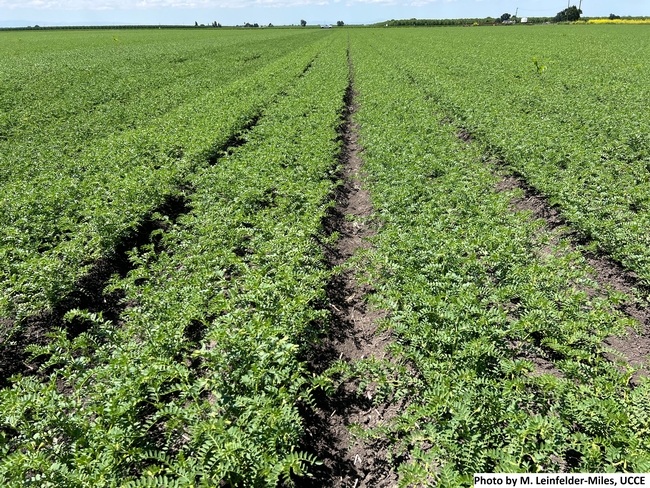
This was a non-replicated evaluation; therefore, no statistical analysis is presented (Table 1). Stand counts were made approximately two weeks after planting on April 9th. The stand was assessed as the number of plants per two-foot length. Twelve replicate counts were averaged. In early May, we observed that Sutter and advanced lines 102, 104, and 110 had slightly earlier flowering than UC 27 and advanced lines 94, 95, and 96 (Fig. 1). We are interested in knowing whether the advanced lines have tolerance to Fusarium wilt and Ascochyta blight, but no diseases were observed at this location.
We harvested on July 25th. The plots in their entirety were combined and weighed. At harvest, the grower observed that lines 104 and 110 had an upright growth habit that made them easier to harvest. We measured harvest moisture on three subsamples, which were averaged for the summary table below, and we evaluated 100-seed weight as a measure of seed size, averaging five subsamples. In previous evaluations of these advanced lines at UC Davis, they have had higher yield and larger seed size than the industry standard varieties, and that held true at the San Joaquin County site this year.
We would like to thank the cooperating grower and bean warehouse; the CA Crop Improvement Association for funding regional trials; and the CA Dry Bean Advisory Board for assistance with statewide research prioritization and assistance with outreach.
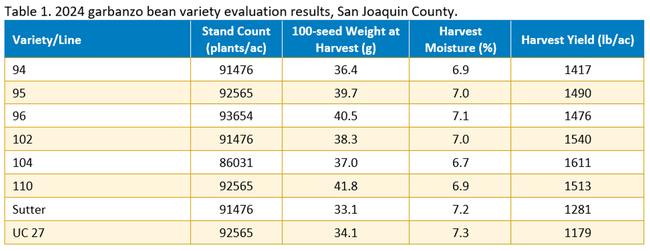
- Author: Michelle Leinfelder-Miles
UC Davis and UC Cooperative Extension will host the UC Dry Bean Field Day on Thursday, August 15, 2024 from 9:30am to 11:45am. The field day will begin at the Agronomy Field Headquarters (2400 Hutchison Drive) on the UC Davis campus. From the Agronomy Field Headquarters, follow the UCCE sandwich board signs to the field location. Look for the pop-up tents. The agenda is pasted below, and a downloadable version is attached to the bottom of this post. DPR continuing education (1.0) is pending. CCA continuing education credits have been approved (1.0 Crop Management, 1.0 Pest Management). Light refreshments will be provided. Thanks for your interest, and we hope to see you at the field day!
Agenda:
9:15am Arrival and sign-in
9:30am Welcome and introductions: Christine Diepenbrock and Antonia Palkovic, UC Davis; Michelle Leinfelder-Miles, UC Cooperative Extension
9:35am Developing breeding resources to improve lima bean adaptation and quality: Christine Diepenbrock and Paul Gepts, UC Davis
9:40am Seed and culinary traits in limas and evaluation of the USDA lima collection: Jaclyn Adaskaveg, UC Davis; Sarah Dohle, USDA-ARS
9:55am Improving heat tolerance in grain legumes (with use of sensors and 3-D models): Sassoum Lo, Heesup Yun, and Earl Ranario, UC Davis
10:05am Choosing varieties for pest resistance, high yields, and high quality – regional trial results: Michelle Leinfelder-Miles and Nick Clark, UC Cooperative Extension
10:20am Cowpea breeding for California: Bao-Lam Huynh, UC Riverside
10:35am Travel to Bee Biology Road
10:45am Lima and chickpea breeding for California: Antonia Palkovic and Christine Diepenbrock, UC Davis
11:00am In-field agronomic evaluation of lima lines for culinary testing: Antonia Palkovic and Jaclyn Adaskaveg, UC Davis
11:10am Genotypic and environmental variation in nutritional traits in common bean: Tayah Bolt, UC Davis
11:15am Improving chickpea for aluminum tolerance and more effective nitrogen fixation: Laura Perilla-Hanao, Ali Said, and Douglas Cook, UC Davis
11:25am Defending lima beans from lygus bugs: breeding and emerging technologies: Kimberly Gibson, UC Merced (alumna of UC Davis)
11:40am Discussion and evaluation
2024-8-15 Dry Bean Field Day Agenda FINAL

- Author: Michelle Leinfelder-Miles
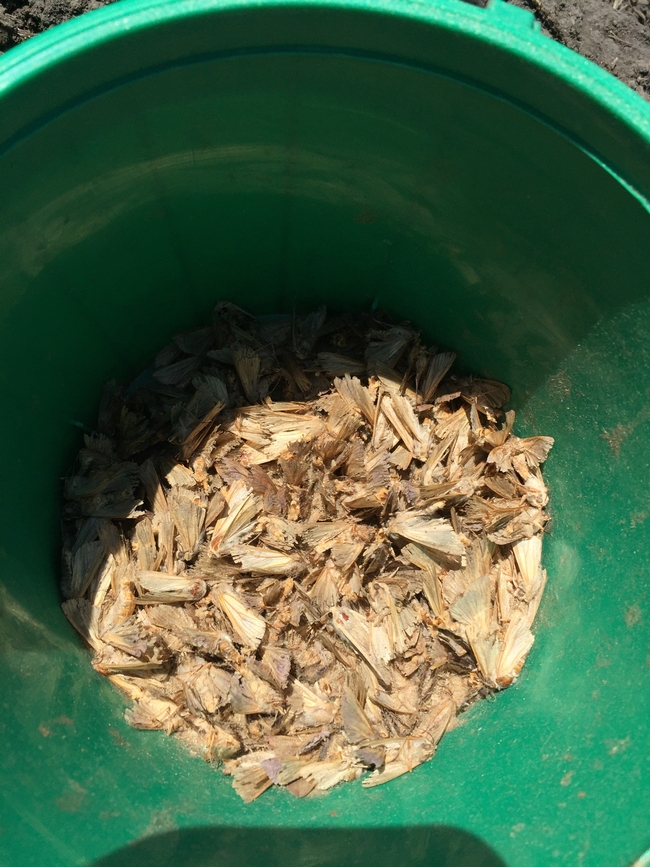
Figure 2 shows monitoring data since 2016 when I began trapping in the Delta. Data are expressed as moths caught per day, averaged across all nine Delta traps. Notice the large arrow indicating the 2024 trend line and how it compares to previous years. While this year appears to be a high-population year, I have noticed variability among the sites where we trap. At one of the three locations, the population peaked at only 9 moths per day, but at the other two locations, the populations peaked at over 40 moths per day. Therefore, it's important to get into the field and look for feeding damage before making a treatment decision.
We reached the peak moth flight last week. Our years of monitoring experience indicates that, if treatment thresholds are met, the optimum time to spray is between one to two weeks after the peak population. So, this would be the week to check your fields for feeding damage and treat as necessary. Please don't hesitate to reach out to me if you have any questions about the IPM guidelines or would like to further discuss this work.


